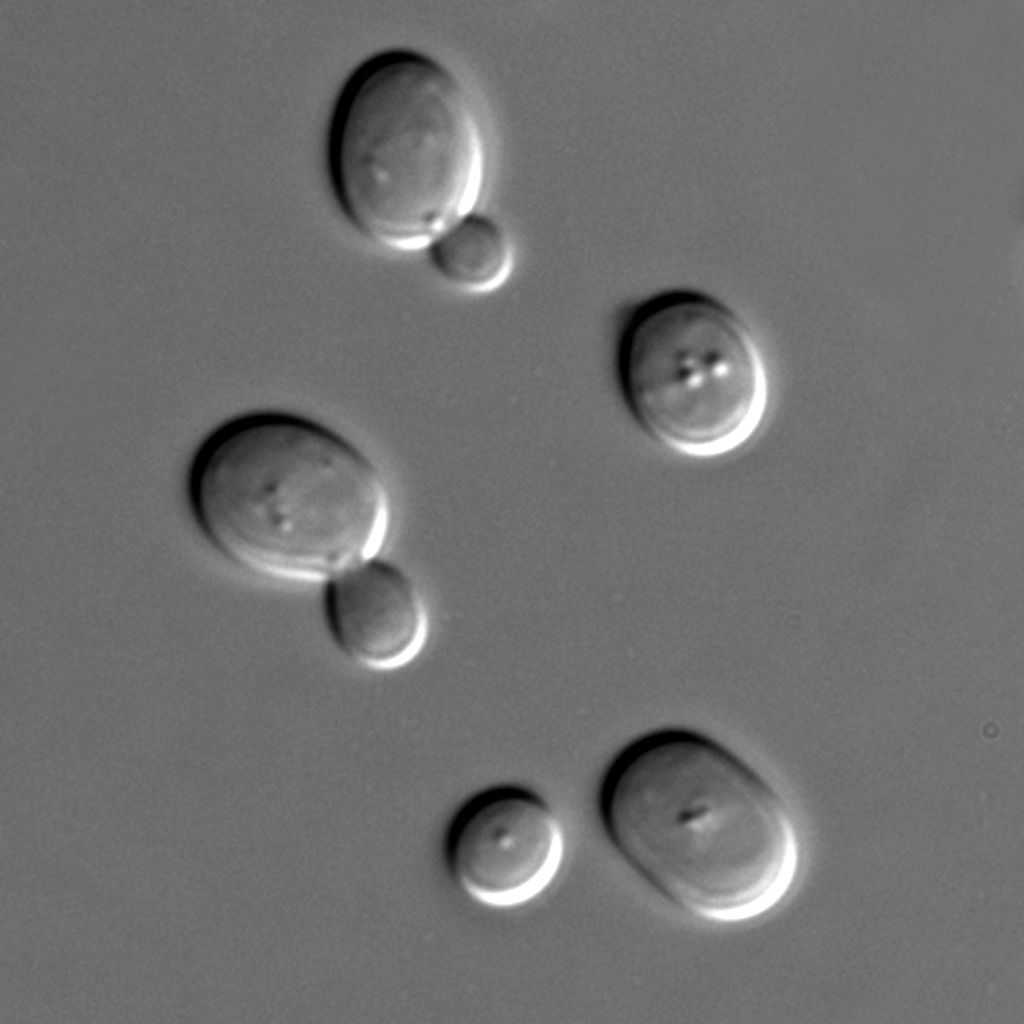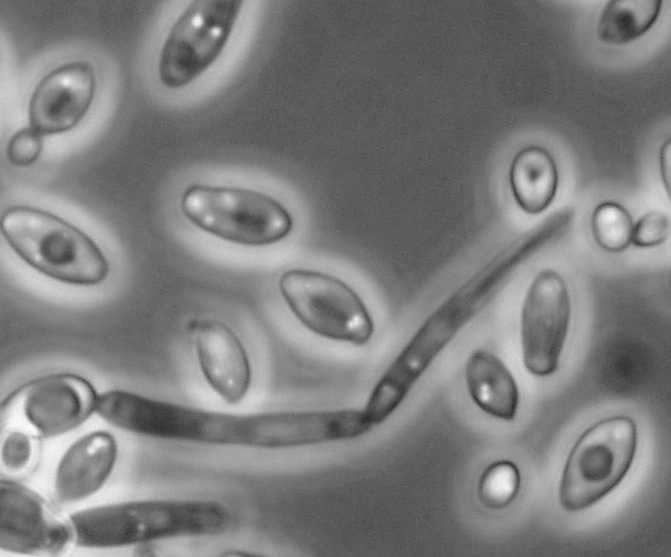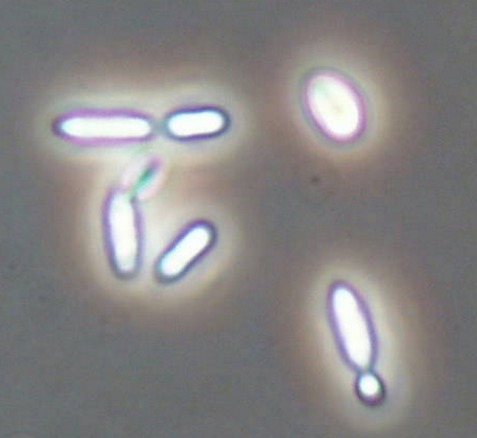Gourmets, what are the real nice things in life? Cheese? Bread? Salami? Coffee? Beer? Wine? Whiskey? Cigars?
I recently realized that none of this food would exist without the help of this wonderful friend here:

Yeast!
It is usually only 3–4 µm in diameter, so we need a microscope with 1000x enlargement to see it. The yeast is very small, but the lineage is a very successful one: it originated already hundreds of millions of years ago, and it’s 1.500 identified species are estimated to constitute 1 percent of all described fungal species. Yeah!
What a magic: you add some of it to bread flour or malt juice, and it immediately starts to bubble, softening and transforming the original mass into something different and – delicious.
Since last year I have started to work with yeast to make bread and beer. One or the other is always in the making – And I would love to continue experimenting to make cider, wine and cheese as well. I really start to fall in love with these wonderful little creatures.

Because it’s such a simple cell form, yeast has been widely used in genetics and cell biology. It is also a world record holder: On 24 April 1996, the yeast form Saccharomyces cerevisiae was announced to be the first eukaryote to have its genome, consisting of 12 million base pairs, fully sequenced as part of the Genome Project.
 Yeasts naturally occurs on the skins of fruits and berries (such as grapes, apples, or peaches), and exudates from plants (such as plant saps or cacti). Some yeasts are found in association with soil and insects. Even deep-sea environments host an array of yeasts.
Yeasts naturally occurs on the skins of fruits and berries (such as grapes, apples, or peaches), and exudates from plants (such as plant saps or cacti). Some yeasts are found in association with soil and insects. Even deep-sea environments host an array of yeasts.
 The biggest achievement of yeast – beyond doubt – is their ability to ferment food. Many yeast species convert for example carbohydrates to carbon dioxide and alcohols. This very useful ability has been used by humans since thousands of years in baking and the production of alcoholic beverages like beer and wine. Archaeologists digging in Egyptian ruins found early grinding stones and baking chambers for yeast-raised bread, as well as drawings of 4,000-year-old bakeries and breweries.
The biggest achievement of yeast – beyond doubt – is their ability to ferment food. Many yeast species convert for example carbohydrates to carbon dioxide and alcohols. This very useful ability has been used by humans since thousands of years in baking and the production of alcoholic beverages like beer and wine. Archaeologists digging in Egyptian ruins found early grinding stones and baking chambers for yeast-raised bread, as well as drawings of 4,000-year-old bakeries and breweries.
Yeast reproduces usually by budding: Here, a small bud or daughter cell is formed on the parent cell. The bud continues to grow until it separates from the parent cell, forming a new cell. Sometimes they have sex as well by undergoes meiosis to form haploid spores. But at least in beer yeast this occurs only about once every 50,000 cell divisions. Poor. Yeast.